The Northern Flicker is a woodpecker with a number of unique characteristics that set it apart from other members of this family. One significant difference is that flickers migrate. The extent of the migration varies based on where the birds breed in summer. Those breeding in Canada and Alaska fly the greatest distance. They move east and south with none remaining in the far north for the winter. Those breeding in the lower 48 move varying distances south in the fall. As a result of this southward shift, Northern Flickers can be found throughout the contiguous United States and parts of Mexico during the winter months.
Another difference, flickers are primarily ground feeders. They forage on grass at the edge of woodlands and in other open areas looking for various insects but especially for ants. Flickers eat more ants than any other bird. To accommodate ground feeding, their bill is also different. It is longer, thinner and curves up just slightly on the end which allows them to probe into the ground more easily. In Crow Island Woods, look for Northern Flickers foraging on sections of lawn as well as among the berries. They are said to greatly prefer those of the Virginia creeper but they will also eat the riverbank grapes, black cherries and poison ivy berries found throughout the Woods.
You can also watch for them in-flight. The name “flicker’ comes from the flash created by their bright flight feathers. The subspecies in this part of the country is the yellow-shafted, so you’ll see a flash of bright yellow and a white rump as they fly in an up and down motion. Other distinctive markings make Norther Flickers one of the most interesting if not bizarre looking birds around. They are large, up to 16 inches from the tip of their tail to tip of their bill. Their chest is white with black spots and is topped off by a large black crescent. Backs are typically golden colored with black bars. The top and back of their heads are gray and they have another crescent, this one red, at the nape of their neck. The only difference between the sexes is the thick malar stripe or mustache found on males. The stripe is black on yellow-shafted flickers.
Currently, small flocks Northern Flickers are moving through Crow Island Woods. Seeing six to ten flashes of bright yellow and white flying to the tree top is so striking. Equally worth a trip to the Woods is the opportunity to see the elaborate attire they sport while foraging or perched on a branch.
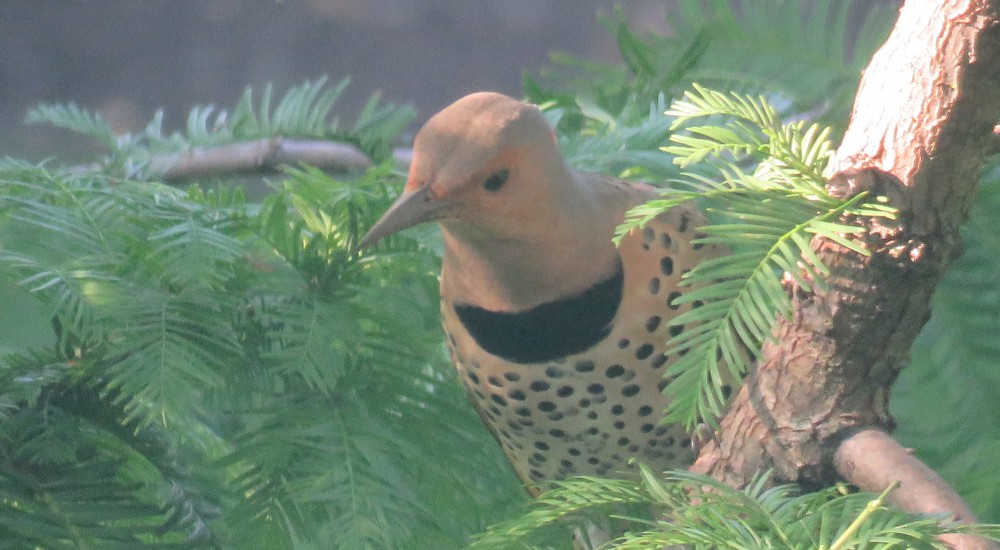
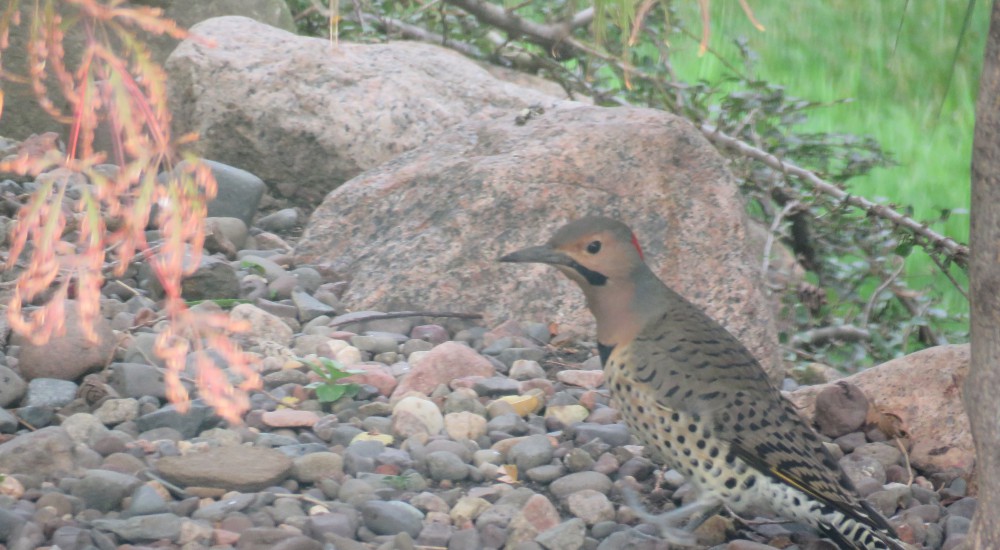
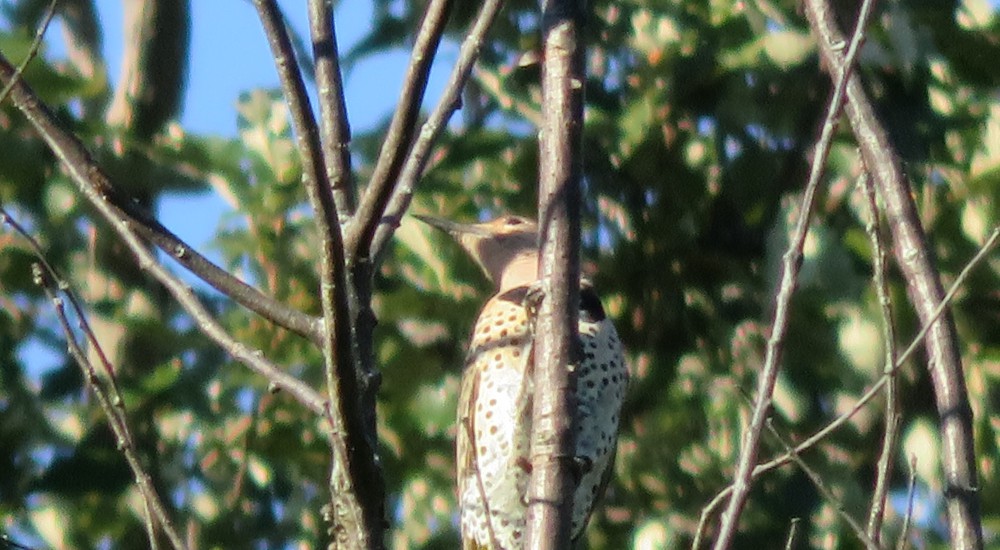
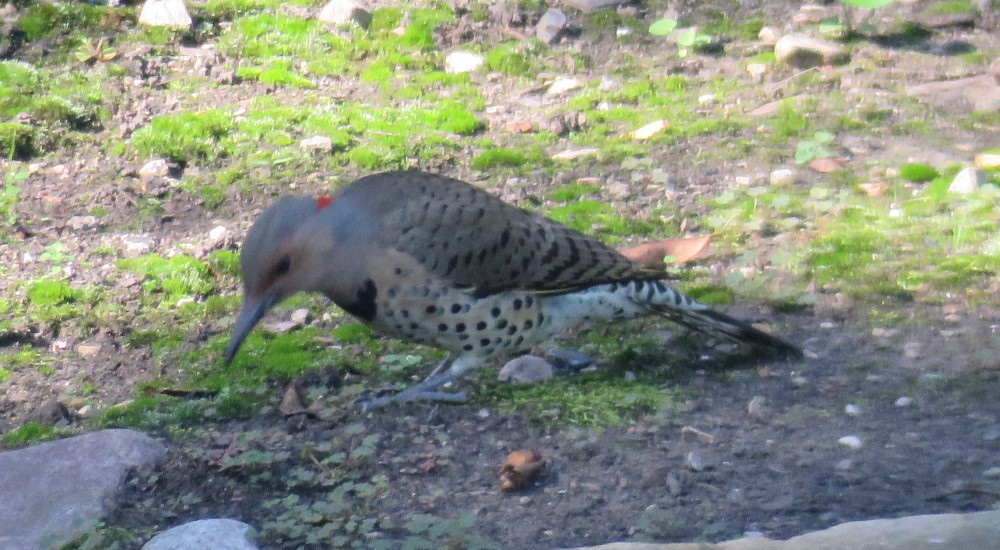
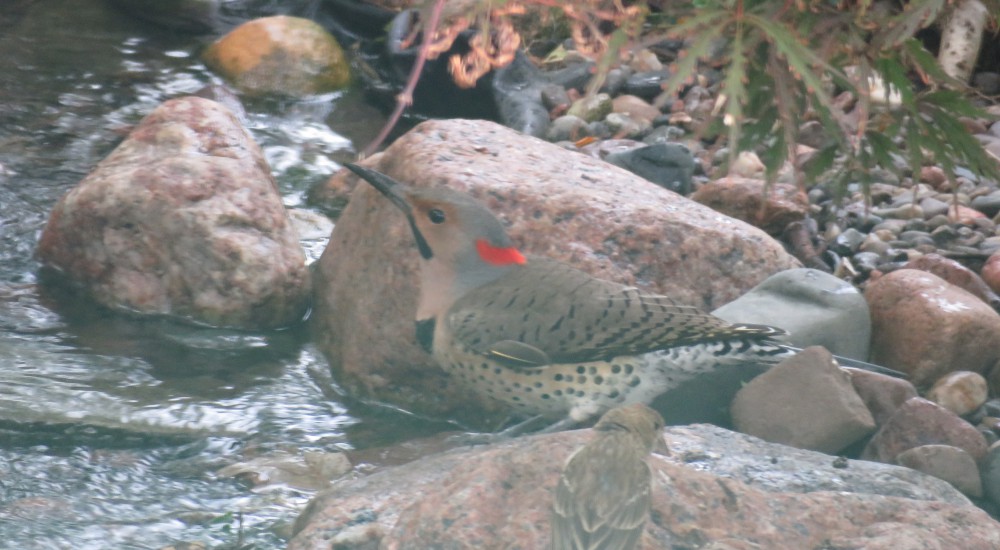
Pingback: Birds In Crow Island – Save Crow Island Woods